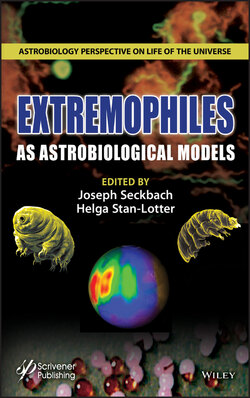Читать книгу EXTREMOPHILES as Astrobiological Models - Группа авторов - Страница 11
Preface Foreword
ОглавлениеLife on Earth is ubiquitous, with most organisms living in so-called “normal” environments that we consider ambient habitats. Many microorganisms are known to tolerate and resist harsh and extreme external conditions; they are called extremophiles [6; 7]. Among them are Archaea, Bacteria, fungi, plants and microscopical animals, like the tardigrades. Some of these microorganisms are living at elevated pressure, such as in the depths of the oceans; some are able to tolerate extreme temperatures and pH values, desiccation or strong UV radiation. Some extremophiles may be under the stress of more than one factor, and we refer to them as polyextremophiles [8]. The severe environments most probably resemble the conditions on early Earth. Some of the extremophiles may thus be considered as “living fossils” since their environments resemble the conditions that have existed during the time when life is thought to have arisen on Earth, more than 3.8 billion years ago.
Are there any life forms outside the terrestrial regions? Why should such extremophilic organisms not also live in extraterrestrial places? If these organisms can thrive in such harsh conditions on Earth, they should be able to exist on celestial bodies with similar conditions.
The origin of life on Earth is still unknown. Life has been suggested to evolve from hot springs, geysers, ocean depths, volcanoes, etc. Some scientists think that life originated in cold environments, and suggest connections to bacteria in extremely cold territories like Antarctica or the North Pole.
